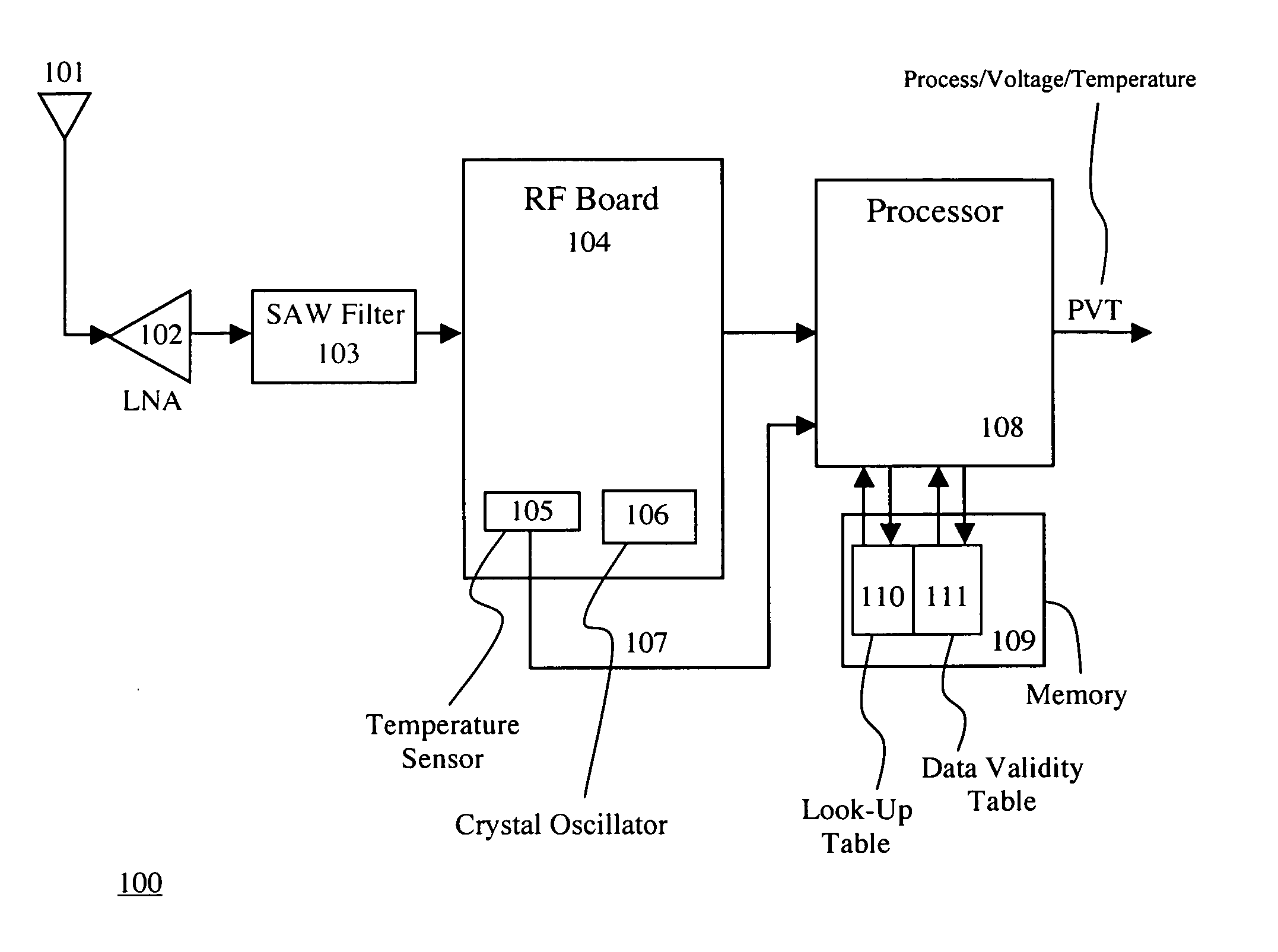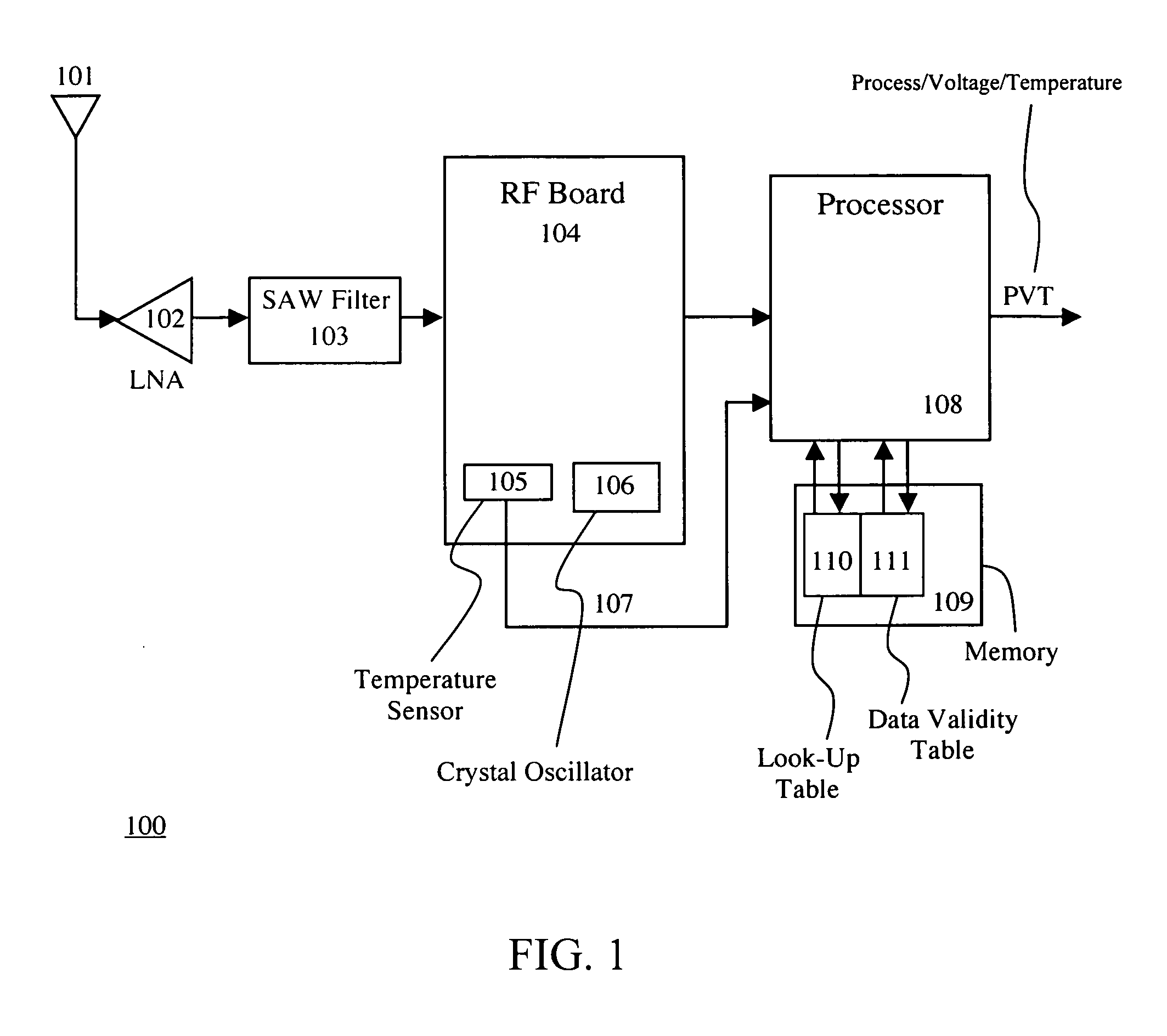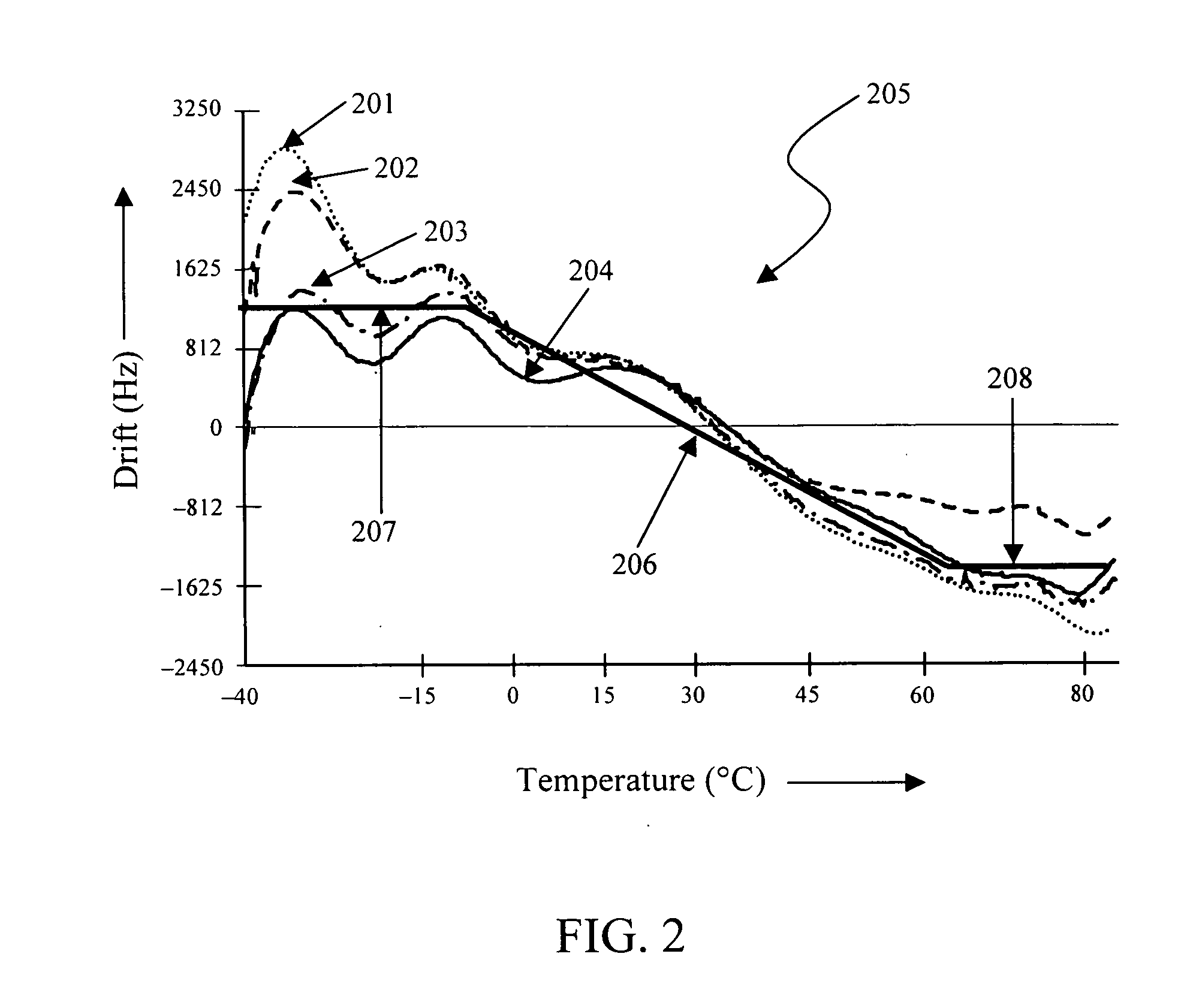Method and apparatus for self-calibration and adaptive temperature compensation in GPS receivers
- Summary
- Abstract
- Description
- Claims
- Application Information
AI Technical Summary
Benefits of technology
Problems solved by technology
Method used
Image
Examples
Embodiment Construction
)
[0027]FIG. 1 illustrates an exemplary GPS receiver 100 implementing an embodiment of the present invention. The receiver 100 comprises a GPS antenna 101 for receiving signals from satellites at a nominal frequency of 1575.42 MHz.
[0028] During an initialization of the GPS receiver, the received signals from the satellites are filtered and amplified so that the signal amplitude and carrier frequency has an acceptable value. In this example, the received signal is amplified by a Low Noise Amplifier (LNA) 102. The antenna 101 may be active, in which case an LNA is integrated therewith. Alternatively, the antenna 101 may be passive, in which case there is no integrated amplifier.
[0029] The signal output from the LNA is filtered using a Surface Acoustic Wave band-pass (SAW) filter 103. The filter 103 removes any noise in the frequency band which is outside of the GPS band.
[0030] The signal then enters the Radio Frequency (RF) section 104, which contains many amplification, signal mult...
PUM
 Login to View More
Login to View More Abstract
Description
Claims
Application Information
 Login to View More
Login to View More - R&D
- Intellectual Property
- Life Sciences
- Materials
- Tech Scout
- Unparalleled Data Quality
- Higher Quality Content
- 60% Fewer Hallucinations
Browse by: Latest US Patents, China's latest patents, Technical Efficacy Thesaurus, Application Domain, Technology Topic, Popular Technical Reports.
© 2025 PatSnap. All rights reserved.Legal|Privacy policy|Modern Slavery Act Transparency Statement|Sitemap|About US| Contact US: help@patsnap.com



